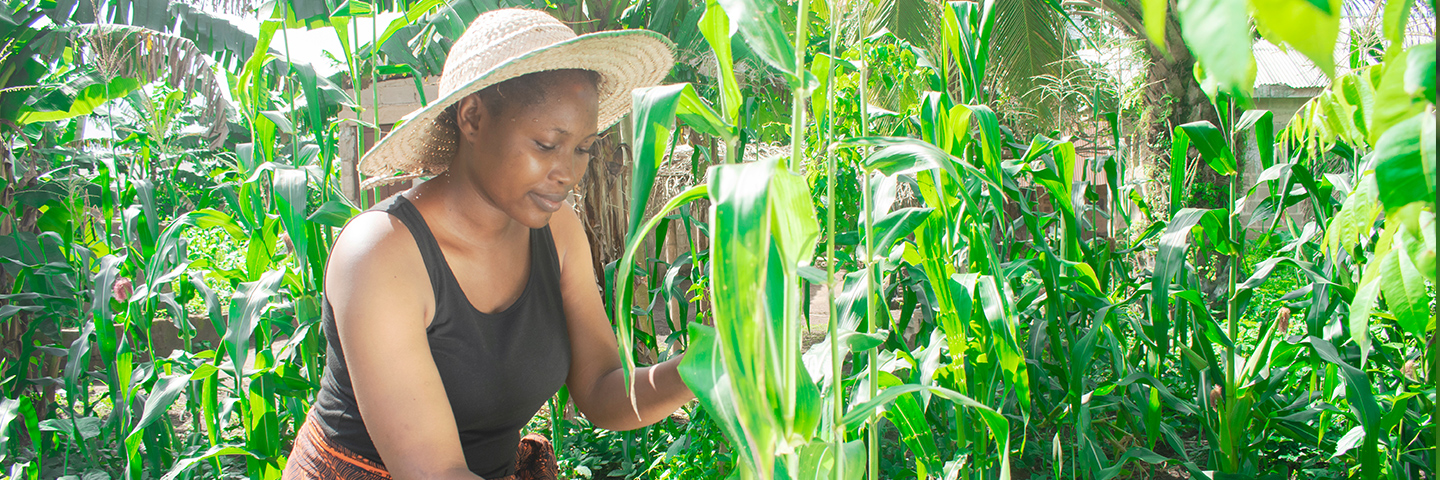Context: In review of the past 10 years Fera has undertaken many small and a few large ‘for-Africa’ projects that have focused on improving national plant health and biosecurity.
Over this time and before, Africa has been plagued by epidemic plant pest and disease events. Banana Xanthomonas Wilt (BXW), Cassava Brown Streak Disease (CBSD), Cassava Mosaic Disease (CMD), Maize Lethal Necrosis (MLN) and Fall Armyworm by example, have all threatened food security at the smallholder and urban household level, and undermined commercial investment for sector growth.
Achievements: Through its work in Africa, Fera has been at the forefront of raising awareness on the frailty of African plant health and biosecurity and the gains to be achieved in building national capacity. In short to stop epidemics from happening, that prevention is better than a cure. The below table provides example of some outcomes that Fera has supported with national partners. The golden thread is an overarching ambition to support African partners, especially National Plant Protection Organisations (NPPOs) and seed certification institutes.
Some notable achievements that Fera has led on:
In Nigeria under BASICS, supporting the design and implementation of a cassava seed system:
-
first molecular diagnostic for CMD to be formatted as a kit for seed certification, supported by a molecular-based proficiency testing scheme
-
first national molecular laboratory for seed testing at National Agricultural Seeds Council
-
first pre-basic seed certification standard for cassava / vegetative crops
-
first pilot of 3rd party (private sector) seed certification
In the Great Lakes Region under the GLCI, supporting the biosecure multiplication and movement of CMD tolerant varieties:
-
first whole genome published for Uganda cassava brown streak virus
-
first molecular (real-time) diagnostics for causal agents of CBSD, applied to high throughput testing and seed certification
-
first field-deployable molecular (LAMP) diagnostics for CBSD, supported by a molecular-based proficiency testing scheme
-
first Pest Risk Analysis on causal gents of CBSD for the biosecure in-country and transboundary movement of cassava planting material
-
first published disease report of CBSD in Burundi and DR Congo
On Maize Lethal Necrosis in East Africa:
-
first characterisation and whole genome published for the causal agents of MLN
-
first molecular MLN virus diagnostic, now routinely in use by KEPHIS for maize seed certification
On Banana Xanthomonas Wilt in East Africa:
-
first characterisation of causal agent of BXW and assignment to Xanthomonas vasicola
-
first regional Pest Risk Analysis for BXW
-
first LAMP and antibody lateral flow diagnostics for BXW
-
first country reports for BXW in Burundi, DR Congo, Rwanda, Tanzania and Kenya
Impact: In its role as a UK partner, Fera’s impact has not been directly at the level of farmers and families, but through in-country partners and national institutes to enable them to then deliver ground-level impact. By example, our impact with NASC under BASICS has been to transform it into a modern, fit-for-purpose, national seed institute for cassava (with the ambition for other crops), enabling it to fulfil its potential to contribute to national food security. We can equally point to the enduring relationship with the Kenya Plant Health Inspectorate Service (KEPHIS) and how this institute is pre-eminent for plant health and biosecurity across East Africa.
Moreover, we can also point to a different type of impact as seen in the changing priorities of donors and how they support the major International Agricultural Research Institutes (e.g. the CGIAR) and Governments. The seed systems projects funded by the Bill & Melinda Gates Foundation now invariably include seed certification and national seed certification bodies as exemplified by the GLCI, and the CGIAR is now more mindful of pest prevention as a natural mirror to its plant breeding capability, extending to dedicated initiatives in pest risk embedded within its major Consortium Research Programmes (CRPs) such as the Root Tuber and Banana CGIAR CRP. In 2015 our championing of the cause for plant pest prevention in Africa was recognised by authoring a paper to the Paris Climate Change Summit addressing future risk of pest epidemics under climate change in Africa.
Future: In this area of plant health and biosecurity, Fera has and continues to campaign for greater change, greater support. Whilst it is hard to unambiguously attribute change to Fera’s voice and action, change is happening. A different narrative is becoming more mainstream within which the words and influencing of Fera can be seen. This is far from to say that our work is achieved. Fall Armyworm is the most recent example of Africa’s ongoing vulnerability to epidemics, and little contingency is in place for the wider spread across Africa of diseases such as MLN, BXW and CBSD. These diseases will surely spread in the coming years.
Fera, as best as it is able, continues to press for more support to better African readiness, and global readiness, against pest and disease epidemics. As climate change and other factors converge against food security in Africa and globally such a need has never been so important.
Impact is not always easy to see, not always glamorous; a shiny new variety with resistance to an outbreak pathogen that has taken over 10 years to develop during which time its harm to smallholders and investment to the sector is long done. In plant health and biosecurity our impact is more frequently measured in terms of events that did not happen, or reach a scale of harm, as would otherwise have been the case.




